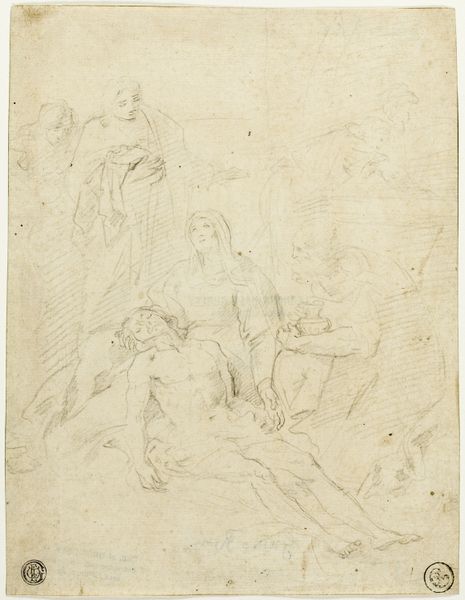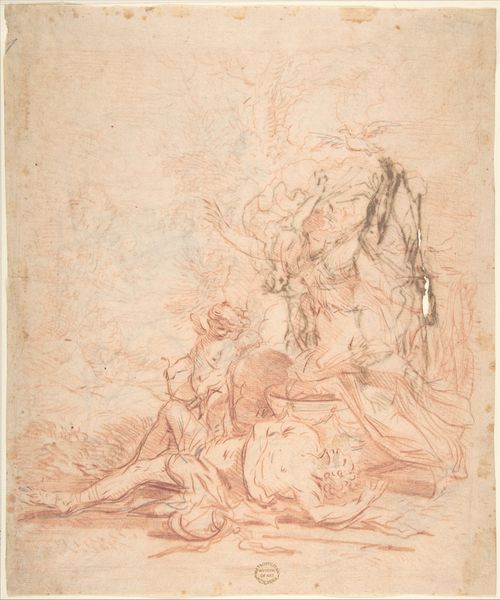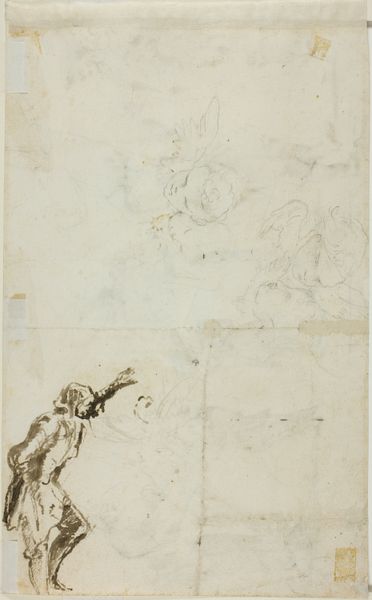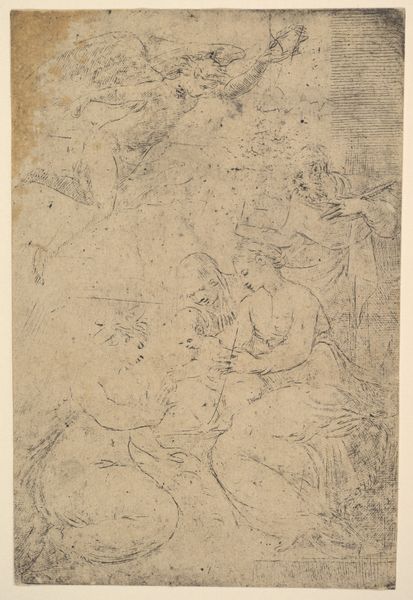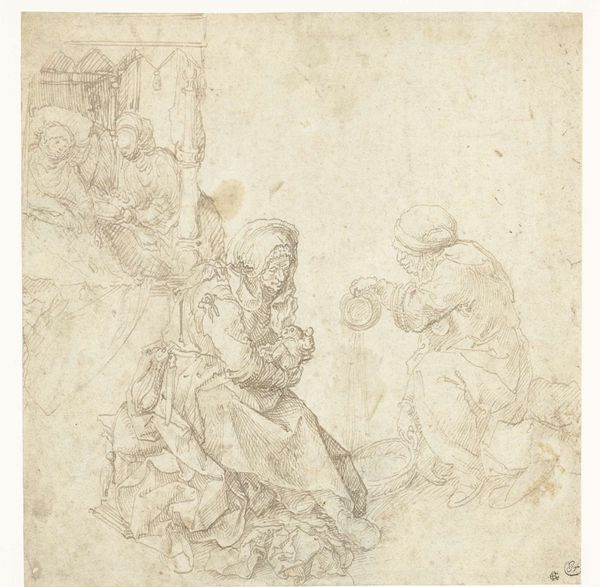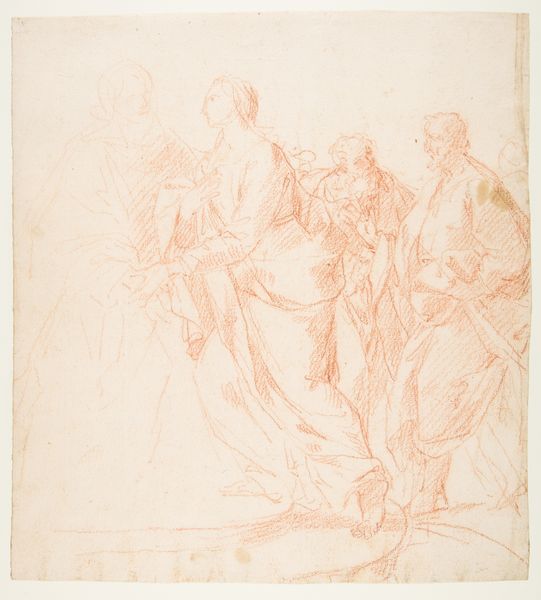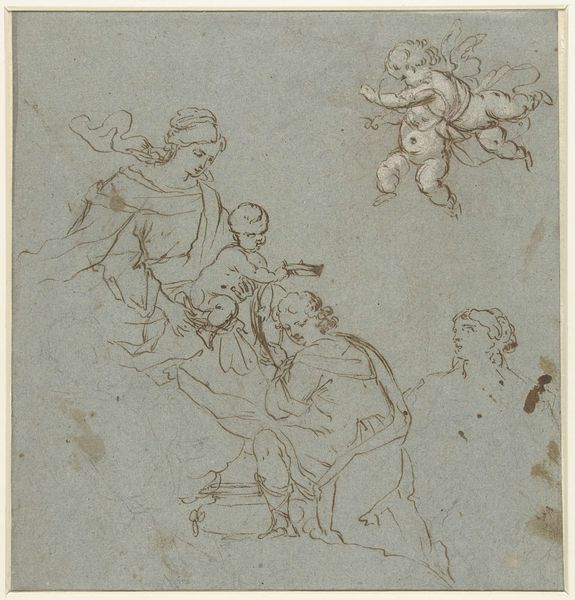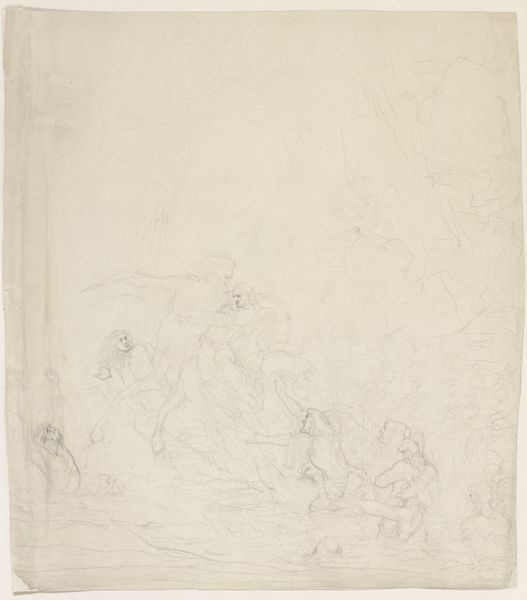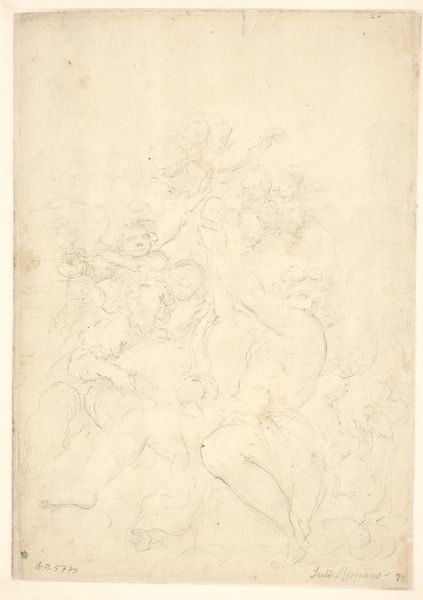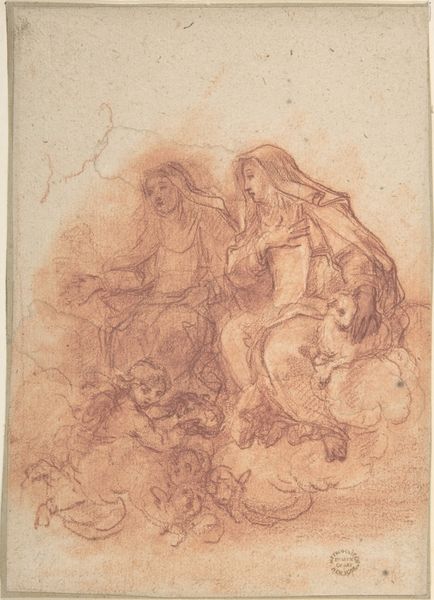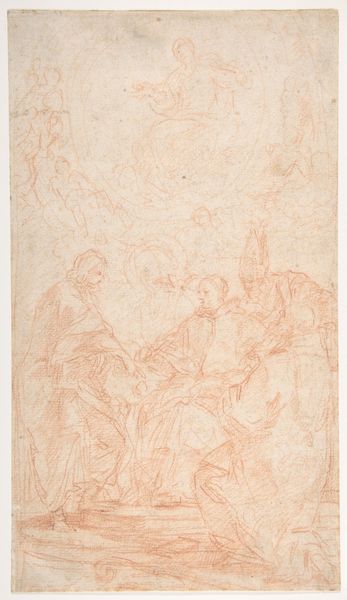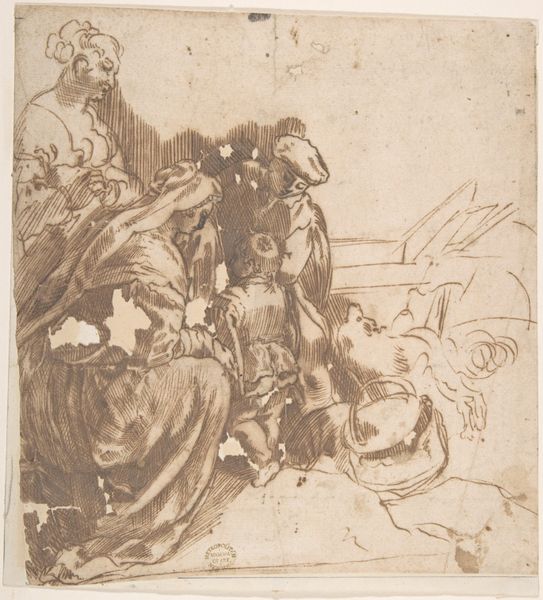
drawing, print, paper, chalk
#
drawing
#
medieval
#
narrative-art
#
ink painting
# print
#
figuration
#
paper
#
chalk
#
history-painting
#
watercolor
Dimensions: 223 × 174 mm
Copyright: Public Domain
Editor: So this drawing, "Christ Rebuking a Disciple in the Garden," is attributed to an anonymous artist from an indeterminate date. It's done in chalk, ink, and watercolor on paper and depicts a biblical scene. The mood is quite dramatic, heightened by the expressive lines, though it feels unfinished. What jumps out at you when you see it? Curator: What immediately captures my attention is how this image participates in a long tradition of visualizing religious narratives for public consumption. Consider the role images played in disseminating religious stories before mass literacy. The church utilized artwork to educate and inspire faith, essentially making art a powerful instrument of social control and ideological reinforcement. Editor: Interesting, I hadn't thought of it that way. Curator: How do you see the composition reinforcing the socio-political role of religious institutions? Notice how Christ, though central, is not elevated, blending in with the apostles. The figures aren't idealized. These choices affect how viewers engage with religious figures and their messages. It isn't only for wealthy elites to enjoy but for commoners. Editor: I see what you mean. The approachability certainly makes the scene feel less distant. It's like it invites you in. So the artist, by depicting figures realistically, perhaps democratizes the scripture itself? Curator: Precisely! This highlights art’s active role in shaping religious understanding. Visual language directly engages and impacts how the broader public absorbs such narratives. Editor: So the visual style isn’t just an aesthetic choice; it actively participates in the socio-religious landscape? Thanks, this really challenges how I look at religious art. Curator: It’s a reminder that art is rarely made in a vacuum. Analyzing the visual through a historical lens helps reveal the broader power dynamics at play.
Comments
No comments
Be the first to comment and join the conversation on the ultimate creative platform.
